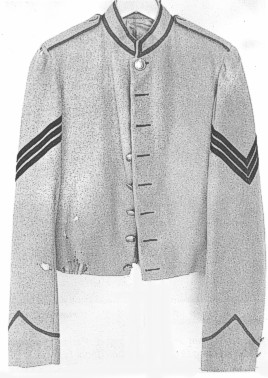Fellas,
I just picked up a commutation jacket, trimmed in navy blue for my early war confederate impression. Ive been debating on which events to wear it to. Obviously early war events, but I was wondering how late into the war would this jacket be accurate. I know that clothing from home was sent to the troops, but would the blue trim and Goodyear rubber buttons be appropriate for the jacket for an event say summer 1863? I found this quote:
W. P. Chambers
March 4, 1864
"Yesterday we were paid up- wages to Jany. 1, 1864 and commutation for clothing for the year ending Oct. 8, 1863."
So I see here that clothes were being sent from home pretty late, but would they still be trimmed in tape and what not?
I just picked up a commutation jacket, trimmed in navy blue for my early war confederate impression. Ive been debating on which events to wear it to. Obviously early war events, but I was wondering how late into the war would this jacket be accurate. I know that clothing from home was sent to the troops, but would the blue trim and Goodyear rubber buttons be appropriate for the jacket for an event say summer 1863? I found this quote:
W. P. Chambers
March 4, 1864
"Yesterday we were paid up- wages to Jany. 1, 1864 and commutation for clothing for the year ending Oct. 8, 1863."
So I see here that clothes were being sent from home pretty late, but would they still be trimmed in tape and what not?



Comment